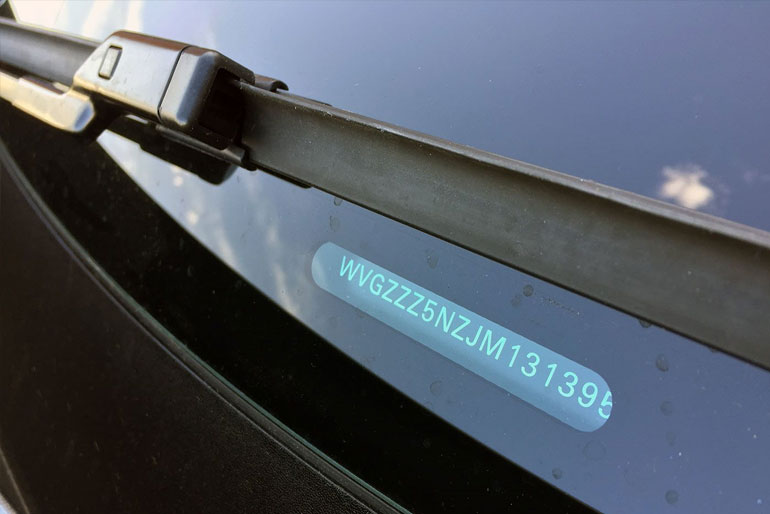If you’ve ever filled out paperwork for your car, whether for insurance, registration, or selling it, you’ve probably come across something called the VIN number. It might sound a little technical, but it’s actually pretty straightforward. The VIN, or Vehicle Identification Number, is like a fingerprint for your car. Every car has one, and no two VINs are the same.
But where exactly can you find this VIN number on your car? That’s what we’re diving into today. Whether you’re buying a used car, checking for recalls, or just getting organized with your car documents, knowing where to look for your VIN is a helpful little piece of knowledge.
Let’s take a simple stroll through everything you need to know.
What Is a VIN Number?
First things first, the VIN is a 17-character string made up of letters and numbers. This code gives you information about your car, including the country it was made in, the manufacturer, the engine type, and more. Think of it as your car’s unique ID card.
It might look something like this: 1HGCM82633A123456
Each part of the code has a purpose, but if that sounds too technical, don’t worry. For most people, the important part is simply being able to find it and read it when needed.
Why Would You Need the VIN?
You might be wondering, “Why would I even need this number?”
Here are a few common reasons:
- Buying or selling a car: You’ll often be asked to provide the VIN.
- Registering your vehicle: It’s usually required when you go to the DMV.
- Checking for recalls: Automakers use VINs to alert owners of any safety recalls.
- Insurance: Your insurance company will need it to set up your policy.
- Tracking stolen vehicles: Police departments can use the VIN to help find stolen cars.
So now that you know why it’s useful, let’s talk about where you can actually find it.
The Most Common Places to Find the VIN
There’s not just one spot where the VIN appears. In fact, car manufacturers usually put it in several places to make sure it’s easy to locate and harder to tamper with. Here are the most common places you can find it:
1. Dashboard (Driver’s Side)
This is probably the easiest and most popular spot. Sit in the driver’s seat and look at the lower-left corner of the windshield, near where the dashboard meets the glass.
You don’t even need to open the door to see it. Just peek through the windshield from the outside. You’ll see a little metal plate with the VIN etched into it. It might be a bit dusty, so a quick wipe with your sleeve could help.
2. Driver’s Side Door Frame
Open the driver’s side door and look around the area where the door latches. There’s usually a sticker or a metal plate there. It might be on the door itself or on the pillar right next to it.
This sticker often includes other helpful info too, like the recommended tire pressure, the car’s weight limit, and the manufacturing date.
3. Under the Hood
Pop the hood and check around the front of the engine block or on the firewall (the metal wall between the engine and the inside of the car). Sometimes the VIN is stamped directly into the metal or printed on a label.
It can be a little harder to spot in this area since there are so many parts and wires, but it’s worth checking if you’re having trouble finding it elsewhere.
4. Inside the Trunk
Some cars have a VIN sticker under the trunk lid or near the spare tire well. It’s not the most common location, but it’s good to know about, especially if you’re checking for consistency across different spots.
5. On the Chassis or Frame
In some vehicles, especially older ones or certain trucks, the VIN may be stamped directly into the frame. Mechanics often use this location when verifying authenticity or checking for any tampering.
6. Vehicle Documents
Okay, this one’s not on the car itself, but it’s super handy. You can also find the VIN number on:
- Your car’s registration papers
- The title of the car
- Your insurance card
- Any service or repair records
So if you’re having trouble spotting it on the car, just grab your glove box folder or paperwork and take a look there.
Do All Cars Have a VIN?
Yes, if your car was made after 1981, it definitely has a 17-character VIN. Cars built before that may have shorter VINs, and the location may vary more, but they still have one. The standard format we know today became mandatory in 1981, so cars from the early ’80s and beyond all follow the same layout.
What If You Can’t Find the VIN?
If you’ve checked all the spots listed and still can’t find it, here are a few things to try:
- Clean the area: Sometimes dirt or rust hides the number.
- Use a flashlight: A little extra light can help you see it more clearly, especially under the hood.
- Check your documents: Your insurance card or registration form should list it.
- Ask a mechanic: If you’re still stuck, a professional can help point it out.
Also, if the VIN seems tampered with, missing, or doesn’t match across different locations, it could be a red flag, especially if you’re buying a used car. In that case, it’s smart to get a vehicle history report and talk to a trusted mechanic.
Can the VIN Tell You More About Your Car?
Yes, it can! If you’re curious, you can take your VIN and plug it into an online VIN decoder. These tools can tell you all sorts of details, like:
- The engine size
- Where the car was built
- Trim level
- Transmission type
- Manufacturer info
It’s especially useful if you’re buying a used car and want to verify what you’re being told about it.
A Quick Recap
Let’s wrap things up with a quick checklist of where to look for your car’s VIN:
✅ Driver’s side dashboard (visible through windshield)
✅ Inside the driver’s side door frame
✅ Under the hood (on engine or firewall)
✅ Inside the trunk or near the spare tire
✅ Stamped on the frame or chassis
✅ In your vehicle documents (registration, title, insurance)
Having this number handy can save you time, keep you informed, and even help you avoid car-buying scams. So the next time you’re dealing with anything car-related, and someone asks for the VIN, you’ll know exactly where to look.
Final Thoughts
Your car’s VIN number might seem like just another string of letters and numbers, but it plays an important role in everything from safety to legal ownership. It’s worth taking a moment to know where it is and keeping a record of it somewhere safe—just in case.
Whether you’re a car owner, buyer, or just someone curious about how things work, now you’re in the know. Simple, right?
Got your keys? Great. Go take a look at your car and find that little VIN. It’s probably closer than you think.







